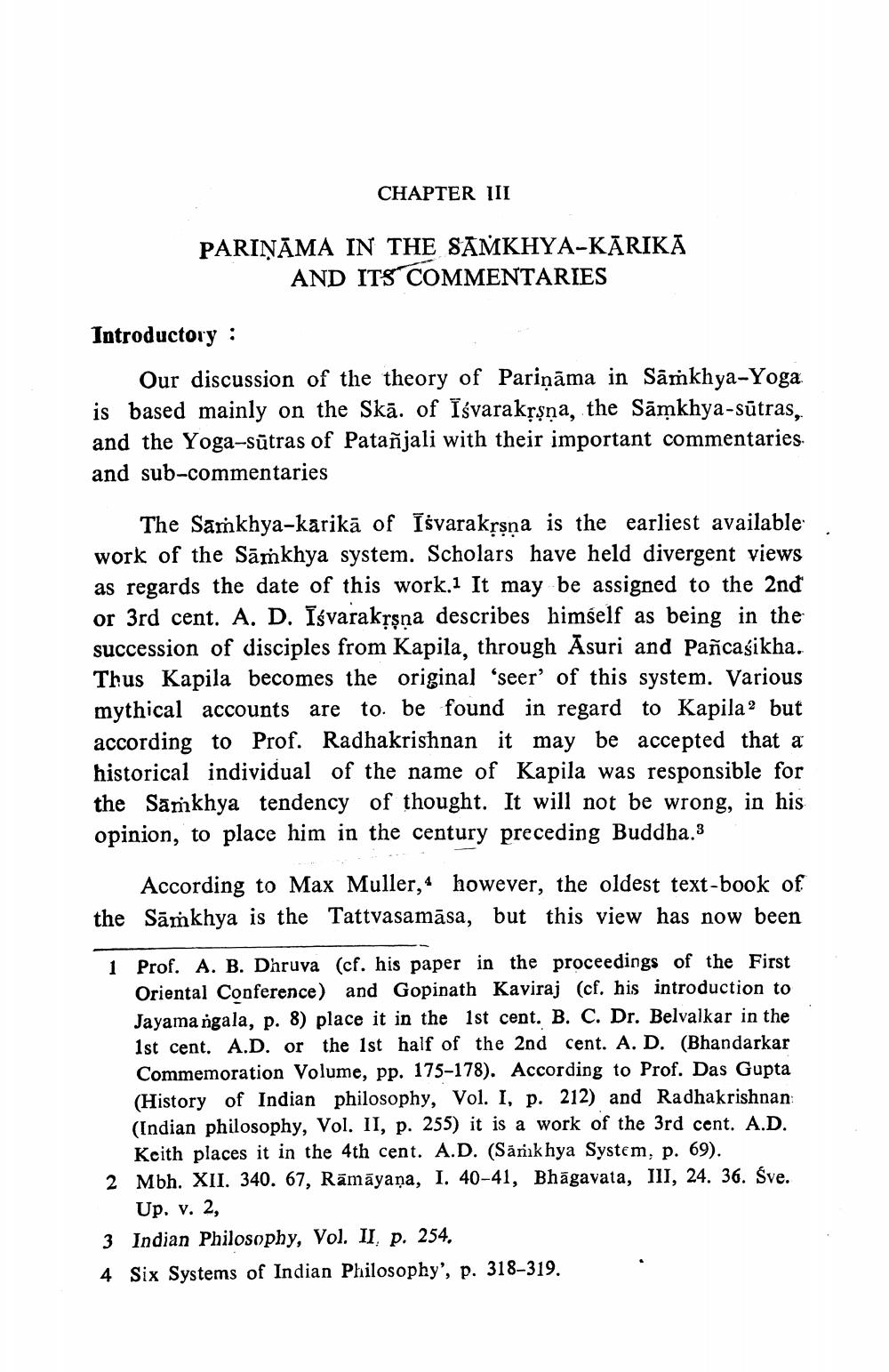________________
CHAPTER III
PARIŅĀMA IN THE SAMKHYA-KARIKĀ
AND ITS COMMENTARIES
Introductory :
Our discussion of the theory of Pariņāma in Samkhya-Yoga is based mainly on the Skā. of Iśvarakļşņa, the Sāmkhya-sūtras, and the Yoga-sūtras of Patañjali with their important commentaries. and sub-commentaries
The Samkhya-karikā of īśvarakļsna is the earliest available: work of the Samkhya system. Scholars have held divergent views as regards the date of this work.1 It may be assigned to the 2nd or 3rd cent. A. D. Isvarakrsna describes himself as being in the succession of disciples from Kapila, through Asuri and Pañcaśikha. Thus Kapila becomes the original ‘seer' of this system. Various mythical accounts are to be found in regard to Kapila? but according to Prof. Radhakrishnan it may be accepted that a historical individual of the name of Kapila was responsible for the Samkhya tendency of thought. It will not be wrong, in his opinion, to place him in the century preceding Buddha.3
According to Max Muller, however, the oldest text-book of the Sāmkhya is the Tattvasamāsa, but this view has now been
1 Prof. A. B. Dhruva (cf. his paper in the proceedings of the First
Oriental Conference) and Gopinath Kaviraj (cf. his introduction to Jayama ngala, p. 8) place it in the 1st cent. B. C. Dr. Belvalkar in the 1st cent. A.D. or the 1st half of the 2nd cent. A. D. (Bhandarkar Commemoration Volume, pp. 175-178). According to Prof. Das Gupta (History of Indian philosophy, Vol. I, p. 212) and Radhakrishnan (Indian philosophy, Vol. II, p. 255) it is a work of the 3rd cent. A.D.
Keith places it in the 4th cent. A.D. (Sankhya System, p. 69). 2 Mbh. XII. 340. 67, Rāmāyaṇa, I. 40-41, Bhagavata, III, 24. 36. Šve.
Up. v. 2, 3 Indian Philosophy, Vol. II, p. 254, 4 Six Systems of Indian Philosophy', p. 318-319.




